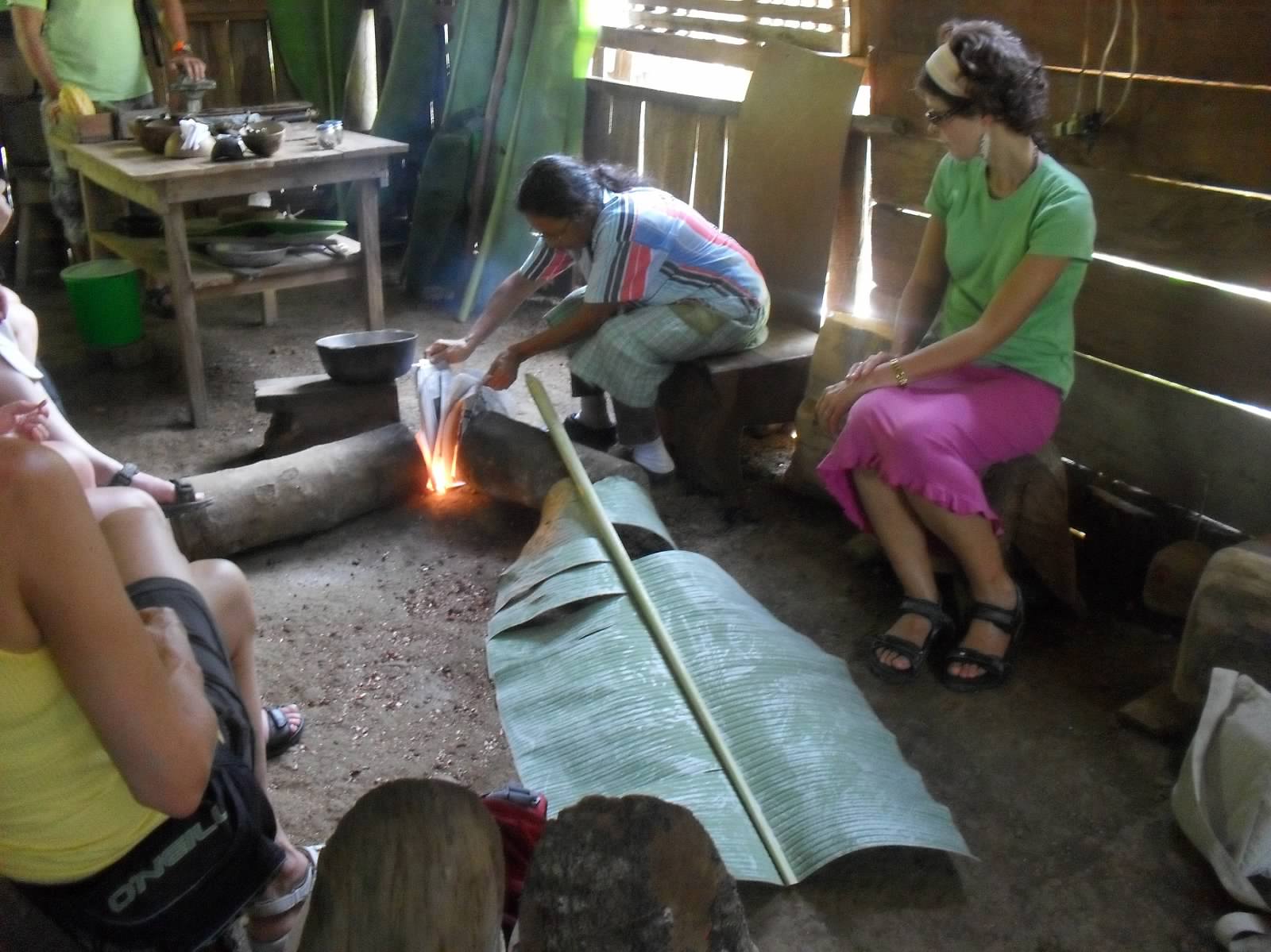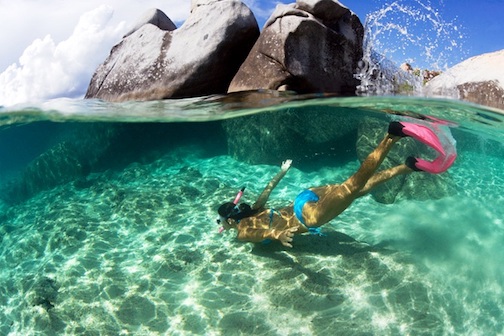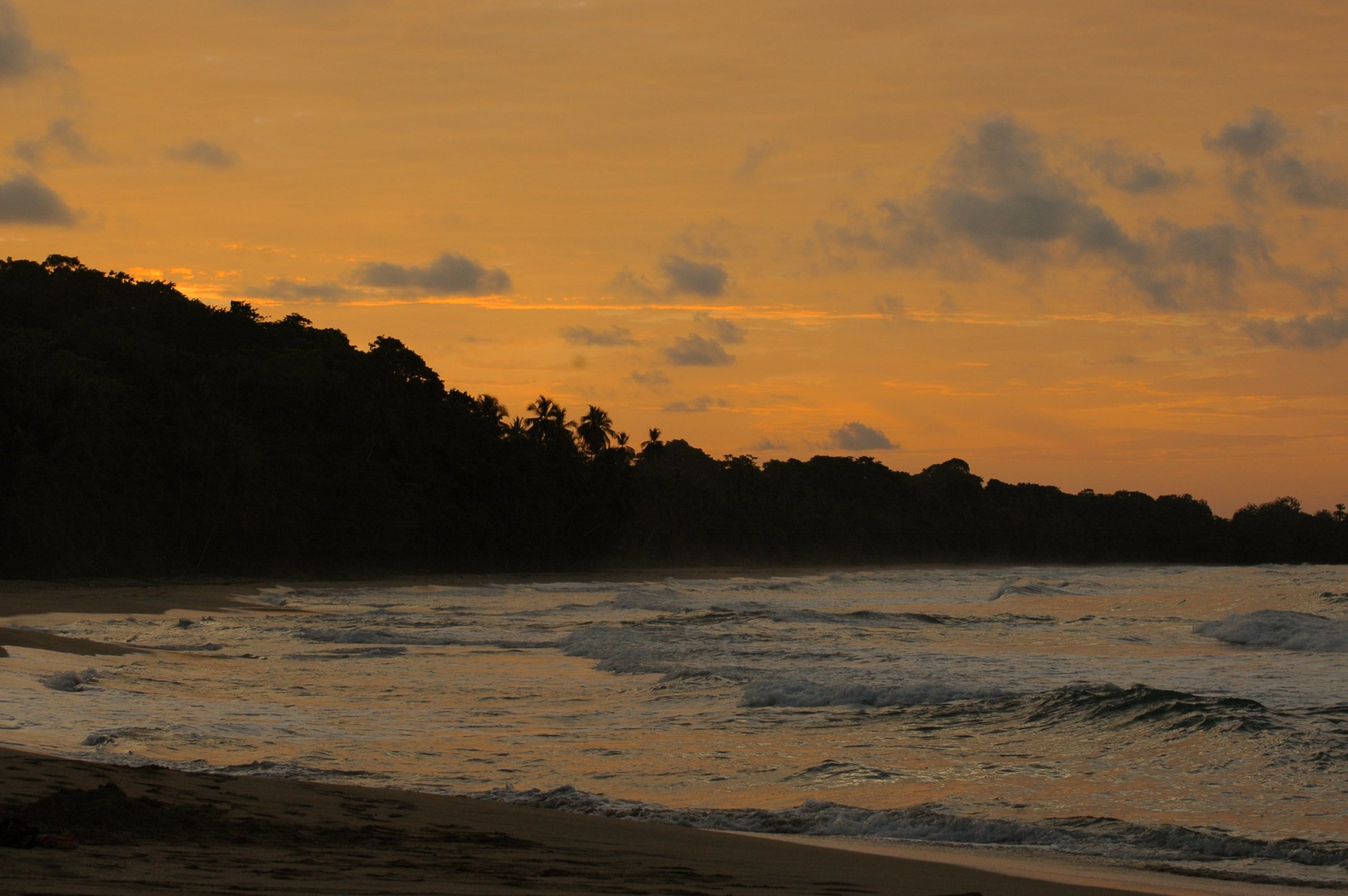Encounter Costa Rica's Caribbean
Authentic Central American Experiences For Your Clients Request A Quote
The laidback pace of this Caribbean beach town wins many a weary traveler over and, visitors often end up staying for weeks, months or even years.
Like much of Costa Rica, Puerto Viejo has its fair share of rain, and the weather here can be quite unpredictable. The frequent showers, however, are always followed by bright sunshine, so everything dries out quickly. Besides, this constant play of rain and sun keeps things so lush, green, and tropical! The best times of year to visit in terms of weather are between December – April, and August – October. In March, there is a month-long Caribbean music festival in the area, which is always a lot of fun.

Cool breezy waters in Costa Rica’s Caribbean

Located on the northern Caribbean Coast, Tortuguero, also called the ‘Land of Turtles,’ is a watery world made up of a network of canals, lagoons, streams, and dense rainforest. Only accessible by plane or boat, this region blurs the line between the ocean and dry land and is a trendy place to visit despite being a little tricky to get to. The area is known for the lushness of its rainforest and the tropical life that it supports. The jungle trails are overhung with vines and bromeliads, and the forest floor is dotted with bright, rare orchids. There are over 300 species of birds here and crocodiles patrolling the canals, monkeys, iguanas, and tiny dart frogs. The whole place glints with rain and sun and the tropical colors of its rainforest wildlife.
build your clients trip with our experts


WHAT NOT TO MISS IN
Costa Rica’s Caribbean

Puerto Viejo de Talamanca
Puerto Viejo de Talamanca is a laid back beach town with distinctive Caribbean flair, situated along the turquoise Caribbean Sea in southeastern Costa Rica. Puerto Viejo provides a diverse community that can only be found in this part of Costa Rica, with both Afro-Caribbean inhabitants and indigenous descent. Here dominate cocoon rice, beats from Reggaeton, vibrant homes, and a relaxed style.

Cahuita National Park
In the park search for Armadillos, raccoons, sloths, howlers, and capuchins. Many reptiles and amphibians, including dart frogs and red-eyed-leave frogs, green iguanas, lizards, green wine snakes, and boa barriers, are present. The most significant reptile is the yellow, golden yellow pit viper. Many birds inhabit this park, including quail and chestnuts, aracari, parakeets, parakeets, parrots, herons and egrets, and more.

Punta Uva
Asmall seaside fishing village located along the southern Caribbean coast, best known for having the most spectacular white sand, palm-studded beaches in Costa Rica. There is a shallow reef, which is excellent for scuba diving and snorkeling. Hike via an inner trail to the panorama platform above the Punta Uva cave and have a marvelous scenic view over the Caribbean coastline and sea.

Bri Bri Indigenous Village
Visiting the village gives a more profound insight into local culture instead. It was entertaining to see the whole process; we are both major fans of chocolate. We cracked a ripe cacao pot, watched one of the women of the family roast boots over an open fire, and had it melted in a press before the chocolate came out from Charlie and Chocolate Factory like something!

Reef snorkeling
The coast of the Caribbean offers excellent snorkeling, where the sloping water is ideal for snorkeling in front of Manzanillo Beach. Snorkelers can swim and observe the reefs easily, but a guide is often advised. Cahuita National Park is a beautiful spot for snorkeling, farther north on the Caribbean coast. Although the reef isn’t as vibrant as it once was, this remains an unforgettable snorkeling experience.

Jaguar Rescue Center
The Jaguar Animal Rescue Center in Playa Chiquita is a center for the rehabilitation in protected areas of mistreated, disabled, and/or seized animals. The rescue center offers direct contact with monkeys, wild cats, sloths, raccoons, forefathers, marsupials, snakes, amphibians etc. during your visit. You will also see all of Costa Rica’s venomous snakes living in terrariums that mimic the natural environment.
destination map

| Title | Address | Description | |||
|---|---|---|---|---|---|
San José | San José, Costa Rica | Sprawling and chaotic at first sight, San José is nonetheless a vibrant capital with plenty to see and do. There are still pockets of colonial gems around San José and some very fine museums and green spaces, as well as a lively cultural life.Read more… | |||
Manuel Antonio | Parque Nacional Manuel Antonio, Provincia de Puntarenas, Quepos, Costa Rica | In the Manuel Antonio National Park you’ll find sloths, iguanas and the rare squirrel monkey among many other species. In the pristine waters around the perfect bays there is a flurry of marine life from dolphins and turtles to whales and colorful tropical fish.Read more… | |||
Arenal & La Fortuna | Volcán Arenal, Provincia de Alajuela, San Carlos, Costa Rica | The presence of the impressive Arenal Volcano is everywhere. Whether strolling around La Fortuna village, canopy rappelling in the forest, boating along Lake Arenal, horseback riding or hiking the countryside…adventure lies around every corner.Read more… | |||
Monteverde | Provincia de Puntarenas, Monteverde, Costa Rica | Home to Costa Rica’s most stunning and pristine Cloud Forest where you can find birds, monkeys and people (zip-lining of course) flying through the trees! There are plenty of adventures from the Sky Walk to horseback riding and hiking.Read more… | |||
Tortuguero | Tortuguero, Limón, Costa Rica | On Costa Rica’s northern Caribbean Coast,, Tortuguero is a water world made up of canals, lagoons, streams and dense rainforest. Known as the ‘Land of Turtles’, Tortuguero is one of the world’s most important turtle nesting sites! Read more… | |||
Puerto Viejo | Limón, Puerto Viejo de Talamanca, Costa Rica | The laid-back pace of this Caribbean beach town is bound to win you over. Here you’ll get a taste of Costa Rica’s Creole culture and enjoy the adventures of the nearby Gandoca-Manzanillo Wildlife Reserve as well as relaxing in its calm Caribbean waters. Read more… | |||
Tamarindo | Provincia de Guanacaste, Tamarindo, Costa Rica | This once small, unassuming fishing village on the Pacific Coast has become the center of Costa Rica’s high-end beach scene. Tamarindo offers designer shopping, incredible restaurants and plenty of nightlife for those seeking a not so quiet beach setting. | Nicoya Peninsula | Península de Nicoya, Costa Rica | Jutting out out into the Pacific, this tropical peninsula is a mountainous and sparsely populated area with an abundance of wildlife. The stunning coastline is dramatic and unspoiled with long stretches of sandy beaches backed by jungle.Read more… |
Rincon de la Vieja | Volcan Rincon de la Vieja, Provincia de Guanacaste, Costa Rica | There are many ways to experience the area ranging from hiking, rappelling, rock-climbing and canopying to relaxing horseback rides and soaking in the volcanic hot springs flowing from the mountain – one of the major draws of the region.Read more… | |||
Central Highlands | Cordillera Central, San José, Costa Rica | This region has some of the highest mountains in Costa Rica with cool, misty cloud forests and rushing rivers. It runs from Nicaragua to Panama and separates Costa Rica’s Caribbean and Pacific Coasts, creating two very different climatic regions. Read more… | |||
Osa Peninsula | Peninsula de Osa, Provincia de Puntarenas, Costa Rica | The Osa Peninsula is an untouched natural wonderland with wildlife-filled rainforests and palm-backed Pacific beaches. Visit the Osa Peninsula’s Corcovado National Park where almost one-tenth of all the mammals found in the Americas live! Read more… | |||
Sarapiqui | Heredia, Sarapiquí, Costa Rica | Puerto Viejo de Sarapiqui in the lush Caribbean lowlands is known for its natural environment filled with tropical flora, and for the broad Sarapiqui River that flows through it. Read more… |
Depending on your client’s preferences, we can help you determine the best experiences tailored for your clients. From where to visit, when to go, what to do and how to get there safely, our travel experts will help you create an experience your clients will love.

Best times to visit Puerto Viejo
This tropical region is warm and rainy all year round, so most people base their visit on not the weather but the turtles. Visit during nesting season (roughly April-October), and you will have the opportunity to see the giant sea turtles laying their eggs at night. Tortuguero is the primary Atlantic nesting site for the green turtle, but if you come early in the season, you might be lucky enough to see the gigantic Leatherback turtle. Visiting later in the season (November to early January), you are unlikely to see nesting. Instead, you will have the pleasure of witnessing the baby turtles make their first dash into the waves. It’s worth noting that more than 200 in. (508 cm) of rain falls in Tortuguero annually, so you can expect a downpour at any time of the year, with many of the lodges providing you with rain gear (including ponchos and rubber boots), but it can’t hurt to pack your own.

practical information
HOW TO GET THERE
Although Puerto Viejo doesn’t have an airport, you can fly to Limon about 75 minutes north of the town. Public buses arrive and depart from the bus stop along the beach road in the center of Puerto Viejo. It takes around 5 hours t get to Puerto Viejo from San Jose.
GETTING AROUND
You can easily find your way around town by walking, but you may wish to rent a bicycle, allowing you to pedal out to beaches east of Puerto Viejo instead of walking there.
WHERE TO STAY
Accommodation options in Puerto Viejo range from the most basic B&Bs with hammock beds to luxurious resorts, and everything in-between.

More highlights of Costa Rica
With eight local offices in Latin America, we have the perfect base to help you build the perfect trip for your clients. Unrivaled experience with a wide selection of bed & breakfasts, small posadas, unique boutique hotels and world class luxurious lodging.
